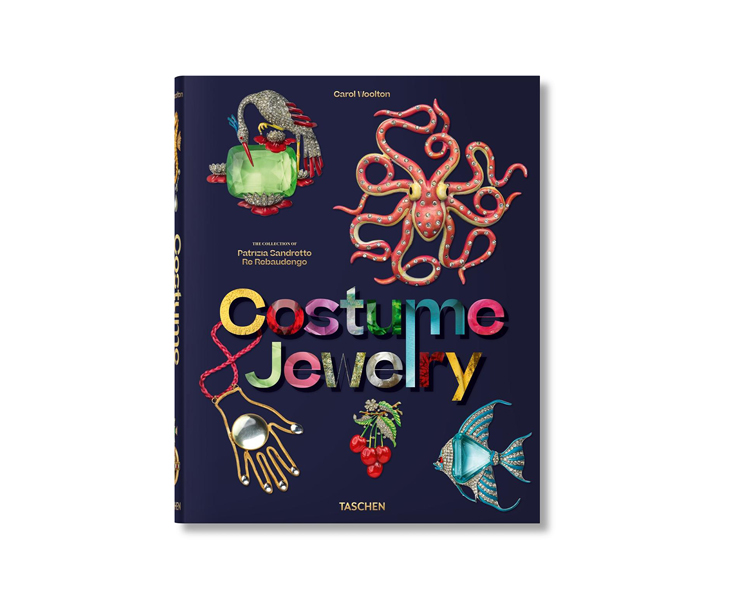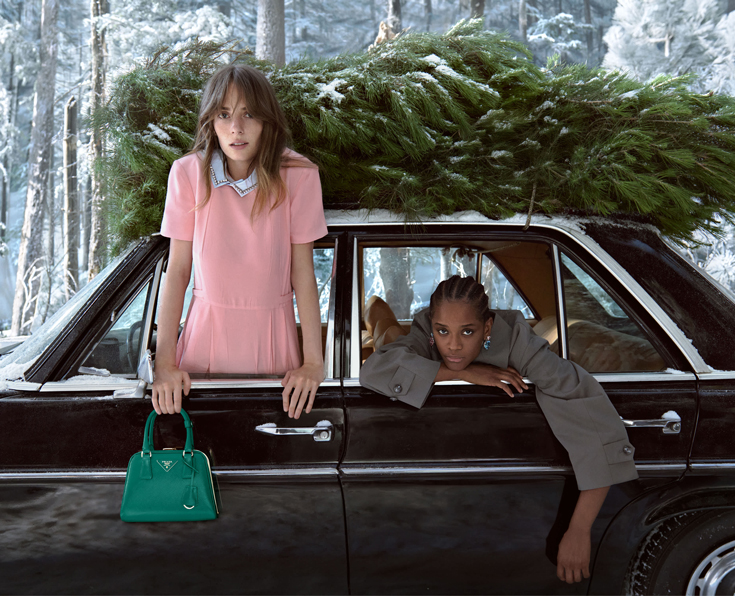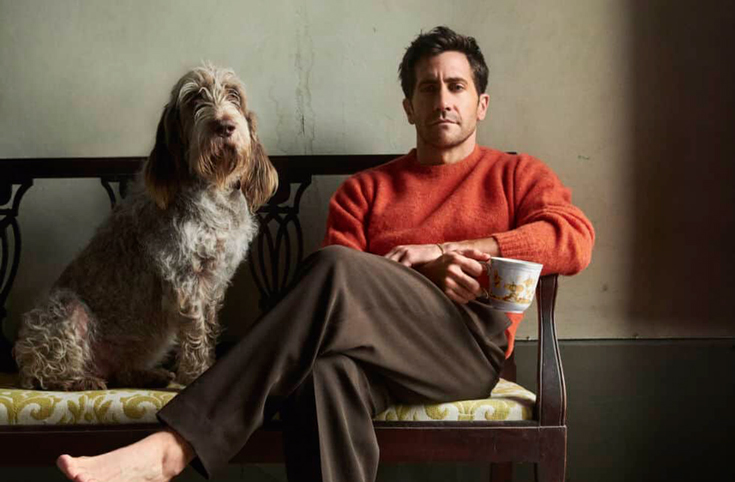TEN MEETS RABANNE’S JULIEN DOSSENA

Ask Julien Dossena what the key to creating a great collection is and the Rabanne creative director says, “It’s that balance of creative boundaries and the endless freedom of possibilities.” Every season he must give his imagination the freedom to roam and then focus all that energy into something real, tangible, wearable. Fantasy and reality walk hand in hand in a Rabanne collection – each are given their own space to breathe.
And breathe they do. Every season the fashion corps wait for Dossena and his talented Rabanne atelier to exhale. They produce couture-level, museum-worthy, highly collectible, assemblage pieces. Impossible (but not) feats of imagination and fashion engineering, each is handcrafted by specialist artisans. But also, at Rabanne you can buy beautifully cut tailoring, whimsical dresses, perfect coats – pieces that make real life soar.
Dossena, 41, joined Rabanne in 2014, after several stop-start attempts by its owners, the Spanish fragrance giant Puig, to reanimate the fashion side of the business. He likened it to putting a classic car back on the road. “She’s not going so fast on the roads. You really have to drive it carefully and take care of it.” Keen to gain the trust and loyalty of fashion customers, he focused on key wardrobe pieces that every woman would want. His energy went into honing and perfecting the cut and fit in line with the modernity and sharpness of the brand. His Balenciaga training – where a perfection of cut was the standard – came to full fruition.


It was only once he’d safely established these fashion foundations and had begun to see commercial success that Dossena allowed himself to fully dream. “All my references were minimal, modern, sharp. Then, at some point, I thought that was a bit narrow [and decided] I should escape from that.” He pinpoints the exact collection that signified his change of creative gear: SS19. “It was the first time I went for antique prints, old flowers, almost like English wallpaper that was burned by the sun. I mixed it with pinstripe and then put a net of metal on top.”
The collection was such a critical and commercial success that it changed everything. “It said you can explore wherever, whenever you want. There is no limit to what you can propose or your inspirations. And it was really free. Like an escape from my all my past experience of working in fashion.” Looking back, he now sees it as a pivotal moment. “You don’t realise when you are doing it that it will define something for years to come.” After that came a string of wildly creative collections with the designer exploring medieval imagery, aspects of femininity and tropes of French chic. “From that collection on, I never stopped myself from exploring a subject or a story or reference that feels interesting,” he says.
Dossena is grateful for the creative trajectory he’s been able to carve during his 10-year tenure. With three-year contracts now standard for creative directors, designers rarely get to grow within a brand the way he has. “The turnover is really quick now of designers. I guess I’m lucky to be able to stay that long because it was a steady construction.”

These days he leans into the paradox at the heart of fashion. “You must have a strong personal style and identity that puts you on the map in a consistent way, but at the same time, you must always challenge your taste. Take risks with your research and sometimes even go into places that disgust you to get the best out of it and find new way of expressing yourself.” But wherever his imagination takes him, he always comes back to the Rabanne woman. “The reality makes me dream as much as something that I’m aesthetically driven to,” he says. “Watching a woman walking in the street with a certain way of life, attitude or a gesture is as inspiring as a novel that I read or artwork that I see. You have to ground your freedom in that reality.”
Craft plays a huge role in creating his catwalk thrills. For decades, the house has worked with an artisan called Christophe. He trained with the founder Paco Rabanne and had become the go- to man for metal mesh for houses like Gaultier and Versace. He’s now passing that knowledge on to three artisans in the Rabanne atelier. “They are young and obsessed by these techniques. They are mastering it. It’s always evolving, the craftsmanship.” The signature assemblage pieces made from plastic, leather, metal and mesh are the most collectable and the most expensive. “It’s all handmade, link by link by link. It’s hours of work. It’s really our couture,” says Dossena. For SS24, wood was a primary material – integrated with metal, it was, says the designer, his most ambitious collection ever in terms of craft and artisanship. “Piece by piece they hand-build a design,” he says of the atelier. “It’s the most artistic way of working.” The collection had a ‘mythic’ look, as if made up of relics of past and future civilisations. “I really wanted it to be like you took some fantastic antique pieces and combined them. So you have aspects of something that is precious and, at the same time, rustic.” Each piece evolves over several fittings. “The only limits are human limits and limits of time,” says Dossena, which focuses his intent. If he makes alterations, “it’s going to be one night and one day to change it”.
Rabanne has invention at its core. The brand was founded in 1966 by Spaniard Paco Rabanne, who went from making jewellery for labels like Givenchy, Dior and Balenciaga to becoming one of fashion’s super- innovators, applying his jeweller’s know-how to fashion with never-seen-before assemblage pieces made from unconventional materials like metal, plastic, wood and paper. Rabanne and the women who wore his space- age clothes (Jane Fonda in Barbarella, Francois Hardy, Amanda Lear and Jane Birkin) were plugged into a revolutionary spirit that fuelled fashion, art and cinema in the ’60s. “Everything was happening here in Paris. Paco Rabanne was a leader. His fashion aesthetic was optimistic, it was new and young and happened at the same time as sexual liberation. He was talking to modern women,” says Dossena.


Rabanne was so famous that every French kid knew of the brand growing up, including Dossena, even though his home, in Le Pouldu, a small beach town in Brittany where his father ran the local nightclub, was far from the fashion epicentre. As a young boy, he was obsessed with drawing. “Some of my friends wanted to be footballers because of the pleasure of playing soccer. And me? I liked to draw.”
He resolved to find a job where he could draw all the time, but it wasn’t until his late teens that he figured out that fashion could offer him exactly what he desired. He began looking at British style titles like The Face and Dazed and Confused. “I discovered designers in the pages of those magazines that were magical to me,” he says. One spread featuring a barefoot boy in a lavishly distressed Yohji Yamamoto jumper and cargo pants struck a chord. “I remember saying, ‘I want this sweater because it’s so beautiful.’ I asked my grandmother, ‘Do you think we can make it?’”
He studied fashion at Brussels’ visual art school La Cambre, which counts Marine Serre and Anthony Vaccarello as alumni. After graduation, he got a job with Nicolas Ghesquière, who was at the height of his success at Balenciaga. “I definitely cite him as one of my mentors,” says the designer of his four years working with Ghesquière. “It taught me to take care of all the aspects of the of the brand and how you build something strong and confident.”
The trick is to be relentless in your pursuit of ideas.“You really have to dig and dig, and never stop searching,” he says. He’s grateful, too, for the trust that Ghesquière put in him, which allowed him to flourish. They often attend each other’s shows, “and we still talk as much as we did, share our experiences and support each other”, says the designer. A restless, never-satisfied, always-searching drive, honed in those Ghesquière years, still informs his process. For Dossena, comfort kills creativity. “The pleasure of it is in the search,” he says. “I’m searching for new things and new ways to do things rather than propose the same thing over and over.”
It takes confidence to push into the unknown, though. For Dossena, it’s a necessary risk, but one that is mitigated by his process and his trusted atelier. He likens it to being an explorer setting out on a jungle expedition and not knowing exactly what they’ll encounter. “You have to be well prepared, make sure you have always got your compass and your team.” It’s about communication and trust. He pushes the atelier, they respond, and vice versa. Ten years in the job have allowed him to fine-tune his instincts. “You learn the limits, you learn the boundaries of everything, and you learn how to protect your teams. You know exactly where the limit of too much and too far is.”
He starts every collection the same way. The team clean out the studio and take down images of the last collection while he and his right-hand man Jean Philippe Chemin, who has been with him since the beginning, spend a few days at his country retreat laying down ideas. “It’s really like a conversation. What kind of woman? What is interesting? Images, references, a ’90s Meisel shoot, movie stills.” All the time he’s getting closer to the story of the woman they are envisaging. “It’s the most enjoyable part of the process because it’s just like daydreaming. We are searching, and everything is possible still,” he says. Keep dreaming.
Issue 23 of 10 Magazine Australia – DARE TO DREAM – is on newsstands March 22.
RABANNE: METAL GURU
Photographer DAVID VASILJEVIC
Fashion Editor SOPHIA NEOPHITOU
Text CLAUDIA CROFT
Hair CICCI SVAHN at Calliste Agency
Make-up MARION ROBINE at Calliste Agency
Manicurist CHRISTINA CONRAD at Calliste Agency
Digital operator LOUIS CLERC
Photographer’s assistant CLEMENT MAHJOUB
Fashion assistants GEORGIA EDWARDS and SONYA MAZURYK
Casting SIX WOLVES
Production ZAC APOSTOLOU
Clothing and accessories throughout ‘Origins of the Future’ collection by RABANNE











